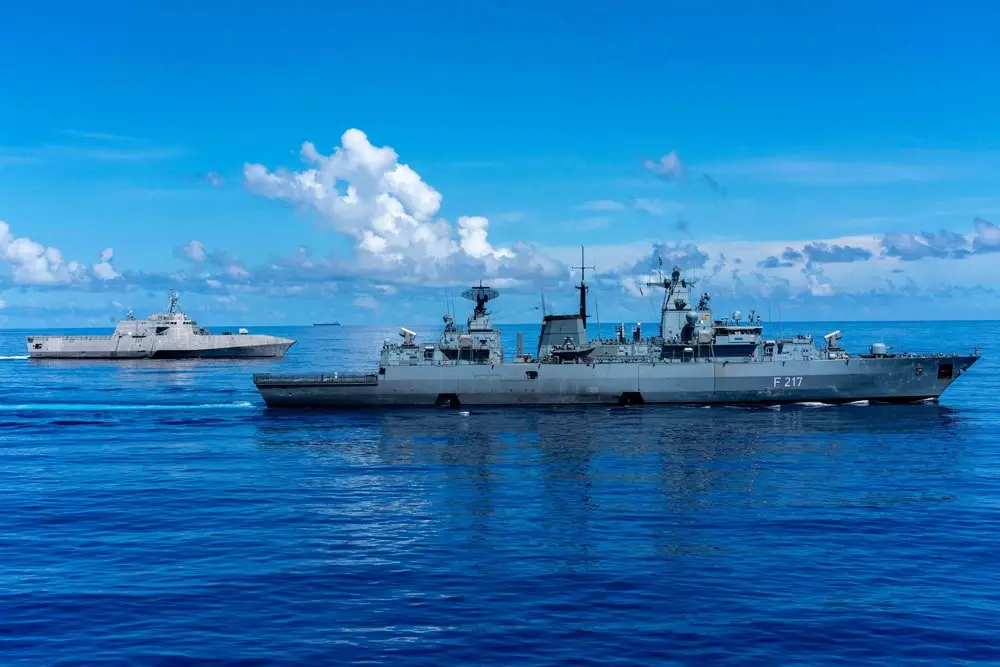According to information published by U.S. Navy on October 22, 2021, Independence-variant littoral combat ships USS Jackson (LCS 6) and USS Tulsa (LCS 16) sailed with Germany Navy frigate FGS Bayern (F 217) in the Philippine Sea, and Tulsa hosted Bayern crewmembers for ship tours while moored at Naval Base Guam.
Follow Navy Recognition on Google News at this link
 The Independence-variant littoral combat ship USS Tulsa (LCS 16) comes alongside German Navy frigate Bayern (F 217) in the Philippine Sea (Picture source: U.S. Department of Defense)
The Independence-variant littoral combat ship USS Tulsa (LCS 16) comes alongside German Navy frigate Bayern (F 217) in the Philippine Sea (Picture source: U.S. Department of Defense)
At sea, the ships practiced communications, tactical maneuvers, division tactics, and bilateral flight operations with Jackson’s embarked MH-60S Seahawk helicopter from Helicopter Sea Combat (HSC) Squadron 23 and two German Super Lynx Mk88A helicopters from Bayern.
While onboard, Tulsa’s crew highlighted the unique operational capability of the littoral combat ship, and the distinct commitment to building relationships with partners and allies, integrating with joint operational forces, conducting presence operations, and providing maritime security and stability.
Crewmembers explained the functions of the various spaces throughout the ship to include the flight deck, mission bay, pilothouse, galley, engineering rooms, and berthing spaces.
The discussions went beyond bilateral operations and highlighted shipboard commonalities with German-designed engineering equipment integrated into the LCS. The main propulsion diesel engines, ship’s service diesel generator, and additional other engineering equipment are based on designs by German company MTU Aero Engines.
This recent interaction is tangible progress from previous senior leader interactions, such as in May when German Defense Minister Annegret Kramp-Karrenbauer spent time aboard USS Charleston (LCS 18). She met with Charleston’s crew at Naval Base Guam to discuss the shared U.S.-German interest in a free and open Indo-Pacific.
ESG 7 is composed of Amphibious Squadron 11, DESRON 7, HSC-25, Mine Countermeasures Squadron 7, Naval Beach Unit 7, and USS Blue Ridge (LCC 19), and is the Navy's only forward-deployed amphibious force.
The USS Tulsa is the second naval vessel to honor Oklahoma’s third-largest city. The first USS Tulsa was an Asheville-class gunboat designated as PG-22 that served from 1923 to 1944 before being renamed Tacloban. She earned two battle stars for World War II service. A cruiser to be named USS Tulsa was also authorized for construction during World War II, but the contract was canceled before it was built.
The LCS class consists of two variants, the Freedom-variant, and the Independence-variant, designed and built by two industry teams. The Independence-variant team is led by Austal USA, Mobile, Alabama, (for LCS 6 and the subsequent even-numbered hulls). The Freedom-variant team is led by Lockheed Martin, Marinette, Wisconsin, (for the odd-numbered hulls).



